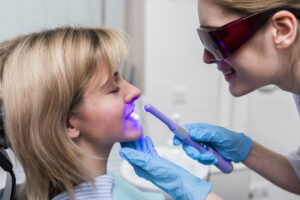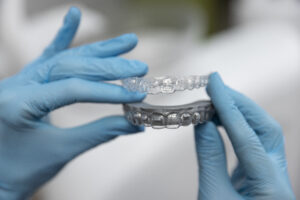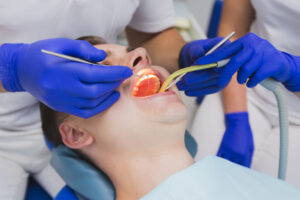Dental crowns are one of the most versatile tools in modern dentistry. When teeth become weak or damaged, a crown restores their shape and strength while also improving the appearance of a smile. Unlike fillings, which repair only part of a tooth, a crown covers the entire visible portion of the tooth like a snug cap. This blog explores what crowns are, why they are used, and how they bridge restorative and cosmetic dentistry.
Understanding Dental Crowns
Definition and Purpose
A dental crown is essentially a tooth‑shaped cap that fits over a damaged or weakened tooth. Dentists use crowns to restore teeth that are broken, decayed, or worn down. Unlike veneers, which adhere only to the front surface of a tooth, a crown covers the entire tooth above the gum line, providing comprehensive protection. Crowns are also used to cover dental implants and root‑canal‑treated teeth, ensuring these restored teeth remain functional and aesthetically pleasing. Essentially, crowns save teeth that might otherwise need extraction.
Materials Used in Crowns
Crowns can be made from several materials, each with unique properties.
Metal crowns
- Made from gold, palladium, nickel, or chromium
- Very durable and long-lasting
- Require minimal enamel removal
- Metallic appearance, best for back teeth where strength is crucial
Porcelain-fused-to-metal (PFM) crowns
- Metal base with a porcelain coating
- Offer both strength and a natural, tooth-like look
Pressed ceramic crowns
- Ceramic core with layered porcelain
- Highly natural appearance
- May be prone to chipping over time
All-ceramic or porcelain crowns
- Most aesthetic option
- Ideal for patients with metal allergies
- Provide a very natural look
Resin crowns
- More affordable compared to other types
- Wear down faster, less durable
- Typically used as a temporary option
Choice considerations
- Depends on tooth location, bite pressure, and the patient’s aesthetic preference
When Are Crowns Needed?
Crowns are recommended whenever a tooth is too damaged to be restored with a filling. Common reasons include strengthening a weak tooth, protecting a cracked tooth, restoring a worn‑down or broken tooth, holding a dental bridge in place, or covering a severely discoloured tooth. Following root canal therapy, the remaining tooth structure can be fragile; a crown acts like armour, preventing fractures and ensuring that everyday activities like chewing remain comfortable. Crowns can also improve alignment and bite by distributing chewing forces evenly. Some dentists even recommend crowns to cover large fillings, reinforce dental implants, or correct misshapen teeth.
Types of Crowns: From Temporary to Same‑Day
Temporary Crowns
- Placed while a permanent crown is being fabricated.
- Stay in the mouth only for a short time.
- Cemented with a weak adhesive so they can be removed easily.
Same-Day (One-Day) Crowns
- Created and placed in a single appointment using CAD/CAM technology.
- A scanner takes digital images of the tooth.
- A milling machine carves a ceramic crown in the dental office.
Partial Coverage Crowns
- Some crowns cover only part of the tooth.
- These include onlays or three-quarter crowns.
- Used when full coverage isn’t necessary.
The Role of Dental Crowns in Restorative and Cosmetic Dentistry
Restoring Function and Structure
The primary purpose of a crown is restorative. When a tooth has suffered significant decay, trauma, or wear, a crown restores its shape, size, and strength so the tooth can function normally. Crowns protect the remaining tooth structure from further damage by acting as a barrier against bacteria, food particles, and physical stress. A properly placed crown also restores the chewing efficiency of the tooth and maintains proper bite alignment. Without a crown, a weakened tooth could fracture or become reinfected, leading to more complex treatments or extraction. In patients with root‑canal‑treated teeth, the tooth can become brittle; a crown is vital for preventing fractures and ensuring long‑term oral health.
Supporting Dental Bridges and Implants
Crowns are crucial components in dental bridges and implants. In a bridge, crowns on adjacent teeth anchor the prosthetic tooth in the middle, restoring function when a tooth is missing. When placed on top of dental implants, crowns create artificial teeth that mimic the look and function of natural teeth. The crown is the visible part of the implant restoration, enabling patients to chew, speak, and smile confidently.
Cosmetic Enhancements
While crowns are primarily restorative, they also play a significant role in cosmetic dentistry. A crown can cover a severely stained or misshapen tooth, instantly improving the appearance of a smile. Porcelain and ceramic crowns mimic the translucency of enamel, providing a natural look that blends with surrounding teeth. Crowns are often used when veneers aren’t suitable, such as when a tooth has large fillings or significant structural damage.
Crowns help maintain proper spacing and alignment. When a tooth is damaged or missing, neighbouring teeth can shift, causing misalignment and bite problems. By restoring the tooth’s size and shape, a crown keeps adjacent teeth in their proper positions. This not only protects oral function but also preserves the harmony of the smile.
Hybrid Restorations: CEREC and Same‑Day Crowns
Technological advances now allow dentists to fabricate crowns in one visit using CAD/CAM technology. Digital impressions are taken, and the crown is milled from a ceramic block right in the office. Same‑day crowns offer convenience—patients leave the office with a permanent restoration without the need for a temporary crown or a second appointment. CEREC crowns are strong and aesthetic, making them an attractive option for both functional and cosmetic purposes.
Procedure: What to Expect
The traditional crown procedure usually takes two appointments. In the first visit, the dentist prepares the tooth by removing some of the outer enamel to make room for the crown. If necessary, filling material is used to build up the tooth and create a stable foundation. Next, impressions of the prepared tooth are taken using putty or digital scanners. These impressions are sent to a dental lab, where technicians fabricate a custom crown. A temporary crown is placed to protect the tooth while the final crown is being made, which usually takes two to three weeks.
In the second visit, the temporary crown is removed, and the dentist checks the fit and colour of the permanent crown before bonding it to the tooth with dental cement. For same‑day crowns, the steps are condensed. The tooth is prepared, a digital scan is taken, and the crown is milled on-site. Patients may wait a couple of hours while the crown is fabricated, but they leave with their final restoration the same day.
Benefits and Potential Drawbacks
Advantages of Crowns
- Prolong the life of a natural tooth by strengthening it.
- Prevent further decay or fracture.
- Restore chewing function effectively.
- Improve the appearance of teeth.
- Longevity: Many crowns last 5–15 years.
- Gold and porcelain-fused-to-metal crowns often last the longest.
- Zirconia crowns resist cracking under high bite forces.
- With proper care, some crowns can last for decades.
Disadvantages of Crowns
- Tooth preparation requires the removal of natural enamel.
- Some patients may experience temporary sensitivity or gum soreness.
- Crowns can crack or loosen over time, especially all-porcelain ones.
- Poorly fitting crowns may trap bacteria, causing decay or gum issues.
- Rare risk of allergic reaction to metals in certain crowns.
- Resin crowns are less durable and wear down more quickly.
Aftercare and Longevity
Proper aftercare extends the life of a crown and ensures oral health. Dentists recommend brushing twice a day with fluoride toothpaste, flossing daily, and using an antibacterial mouthwash. Avoid biting hard objects like ice, popcorn kernels, or very hard nuts, which can crack or dislodge a crown. People who grind or clench their teeth should use a night guard to protect both natural teeth and crowns.
Immediately after placement, chew carefully and avoid sticky or hard foods until the cement fully sets. Temporary crowns require extra caution because the adhesive is weaker; floss by pulling the floss out to the side rather than lifting it up, and contact the dentist if the temporary crown becomes loose. Regular dental check‑ups allow the dentist to monitor the condition of crowns and address any issues promptly. With careful maintenance, crowns can last many years.
The Connection Between Restorative and Cosmetic Dentistry
Dental crowns illustrate how restorative and cosmetic dentistry intersect. From a restorative perspective, crowns repair damaged teeth, prevent fractures, and preserve tooth structure. From a cosmetic perspective, they can transform misshapen or discoloured teeth and improve overall smile aesthetics. Modern materials allow crowns to blend seamlessly with natural teeth, making it difficult to distinguish them from the surrounding dentition. When combined with treatments like veneers, bridges, or implants, crowns play a key role in comprehensive smile makeovers.
The Lasting Legacy of Dental Crowns in Dentistry
Dental crowns are more than simple caps; they are multifaceted restorations that support oral health and enhance the appearance of a smile. By covering a weakened or damaged tooth, crowns restore structure and function, prevent further decay, and ensure comfortable chewing. Crowns can also correct cosmetic issues such as discolouration or irregular shape, allowing patients to smile with confidence. A wide range of materials—metal, porcelain, ceramic, and resin—allows dentists to choose the option that best suits each tooth’s location and functional demands. Whether fabricated in a lab over multiple appointments or milled on-site using CAD/CAM technology, crowns remain essential in modern dentistry. With proper care, they provide long‑lasting benefits that bridge the gap between restorative treatment and cosmetic enhancement, helping patients maintain healthy, attractive smiles for years to come.




